In late 2012, I was invited to a ceremony memorializing WWII Japanese biological weapons attacks on a village near Yiwu in Zhejiang Province. The ceremony would be attended by a group of Japanese researchers whom I would follow throughout the province on their investigation of Japanese germ warfare. This is my production diary:
November 13, 2012: The Laws of Wartime
I’m flying directly from Taiwan to Shanghai. To me, this is still amazingly convenient, as I remember when there were no direct flights between Taiwan and the Mainland. China and Taiwan share the policies of “mutual non-recognition” of sovereignty and “mutual non-denial” of jurisdiction—the perfect attitude one should have toward anyone really.
The aircraft is full of middle-class Chinese tourists loaded with Taiwanese junk gifts, some of which are actually made in China. Are these tourists stupid or do they not care? Just asking this question makes me aware of how conscious I am of these Chinese tourists. I feel superior to them—smarter, more cultured, better. But whenever I hear people denigrating them, especially in Europe, I get angry, as if they were insulting me.
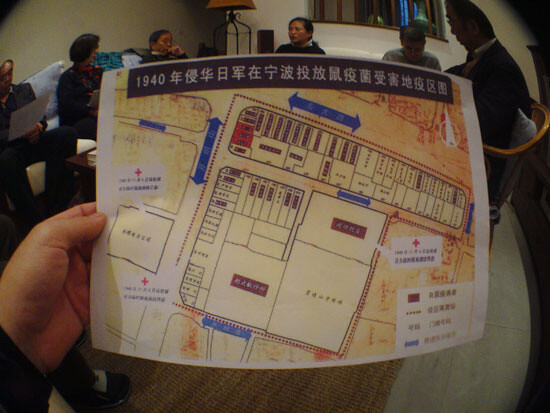

November 14, 2012: The Greater East Asian Co-Prosperity Sphere
I’m staying in a business hotel in a suburb of Shanghai. I don’t know much about the area other than that it’s in Minhang and near a huge sauna complex and what seems to be a red-light district. Black BMWs and Mercedes are parked chaotically all over the hotel lot. Typical Chinese businessmen walk with purpose while workers squat and loiter in the alleys. I wander around dreading the near future: carrying a lot of equipment, squatting over dirty toilets, lack of sleep. To me, traveling means carrying heavy things from place to place.
As the primary representative of biological warfare victims in China, W.X. (as I will call her) organized this trip and the coming commemoration in Chongshan (near Yiwu) in Zhejiang province. The orientation meeting is attended by some Chinese people and one Japanese student. I am the only American.
I am under the impression that the organization of this commemoration has some connection to the murmurs I heard of the Japanese government wanting to finally deal with WWII biological warfare, and that the Japanese in attendance have some kind of connection to the government.1 I am mistaken. Our focus will be on plague.
I had heard of so-called “Holocaust Tourists,” and then I became one. I am also a “Japanese Atrocity Tourist,” as I have toured sites throughout China and Asia. Get in, get some shots, get out. I thought Daniel Goldhagen’s Worse Than War genocide documentary should have been on the Travel Channel with a more charismatic host.2
I first met the Japanese producer S.K. at a WWII conference in New Jersey. He has produced more than a dozen documentaries or programs about the history and legacy of Unit 731, the notorious Harbin headquarters of Imperial Japan’s biological weapons program. In New York, S.K. provided me with incredibly detailed pictures and documents from the Khabarovsk Trial of Japanese germ warfare scientists.3He claims he bought them from an ex-KGB agent while he was in Russia on assignment as a journalist with NHK. He always evaded the question when I asked him about his interest in Japanese biological warfare. He could easily pretend he didn’t understand my English.


A former Ningbo University student at the meeting is very curious about the USA. I assume he wants to move there one day, but it turns out that he actually has no interest in leaving China. He thinks there are too many problems in China, so he must stay. His nationalism is far subtler than I expected. Somehow the conversation turns to Jews in America and the role of Israel in US politics. What is a Jew? Why did the Germans hate them? I don’t think I can address his questions in any intelligent way in Chinese. How do I say “eliminationist anti-Semitism” in Chinese? I manage to find a way.
With the Japanese contingent in attendance, I become a Chinese comrade, which is to say, I become Chinese. It doesn’t matter that I’m an American or that I live in Taiwan. Among this group of Chinese and Japanese, I am Chinese. I can speak the language. I look like them—though I can easily pass as Japanese. The Chinese professors want me to accept my “heritage,” as if I were in communication with CHINESENESS itself. Together we are a sample of the new Greater East Co-Prosperity Sphere—the Chinese and the repentant Japanese.
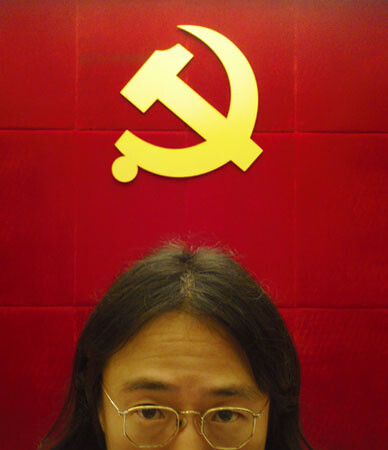

I remember a travel report written by an Asian American student trekking throughout China. The Chinese she encountered claimed that she was also Chinese. But she was adamant that she was an “American,” not Chinese, as if the thought of being Chinese, of being just one in a billion, of being generic, was unthinkable. It was frustrating to her that less educated people couldn’t recognize her distinction.4 No, she was exceptional; she was an American. If she weren’t so young and stupid, she would know that if you scratch any Asian’s skin deeply enough, you’ll eventually reach a Chinese.
For this trip, I kept the following picture in my wallet.
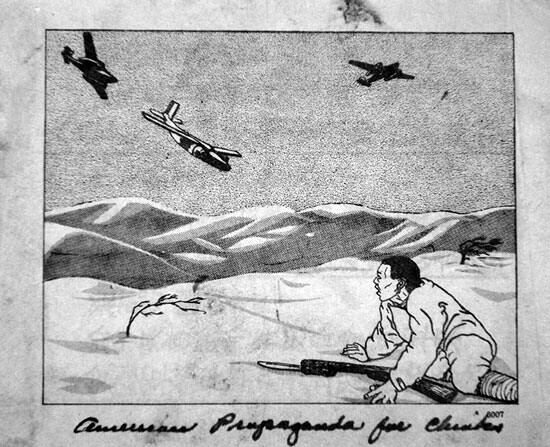

November 15, 2012: Complicity After the Fact
We all check out of the hotel and board a small bus bound for the nondescript Shanghai University. Our host, a professor of history, is documenting the legacy of the 1946 Tokyo Trial. It’s early in the morning, and looking at this guy, I really figure that he has nothing interesting to say, and that it would be a waste of time to film. Just as I suspected, the meeting itself is not interesting, however the legacy of the Tokyo Trial is important for understanding the unresolved status of Japanese biological war crimes.
The International Military Tribunal for the Far East (IMTFE), otherwise known as the “Tokyo Trial,” was the Asian counterpart to the International Military Tribunal held in Nuremburg in 1945–46. The Tokyo Trial failed to prosecute anyone who directly participated in Japan’s secret biological warfare program. For those unaware of the legacy of Unit 731, the US government gave immunity to Japan’s biological warfare scientists, including their leader Shiro Ishii, in exchange for the data gathered from their experiments on live subjects. Declassified American documents clearly prove this. However, at one point during the trial, an American prosecutor does briefly mention Japan’s program:
Mr. Sutton: The enemy’s TAMA Detachment carried off their civilian captives to the medical laboratory, where the reactions to poisonous serums were tested. The detachment was one of the most secret organizations. The number of persons slaughtered by this detachment cannot be ascertained …
The President [Chief Judge William Flood Webb]: … This is something entirely new, we haven’t heard it before. Are you going to leave it at that?
Mr. Sutton: We do not at this time anticipate introducing additional evidence on this subject.5
This “Tama Detachment” was based in Nanjing and was designated Unit 1644. Together with Unit 731, it conducted biological weapons attacks throughout Zhejiang Province. Responsible for innumerable deaths, Unit 1644 and Unit 731 are the reasons why we are here now.
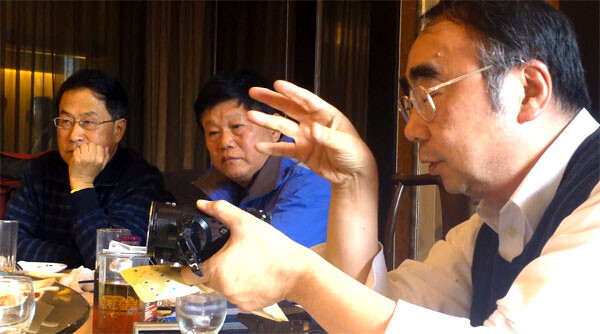

At lunch, one of the Chinese professors from Jiangxi Province, Professor S., announces to all of us at the table that the Japanese invaders killed multiple members of his immediate family. He grew up hating the Japanese for what they had done. His hatred wasn’t something abstract or learned in school, but a functional hate that grew within his body like a bone. Even though he was deferential to the five Japanese sitting at our table, he turned the discussion to the disputed islands. Professor S. was angry with the Japanese government for recently nationalizing some of these islands, known as Senkaku in Japanese and Diaoyudao in Chinese.
It seemed inevitable that a group of Chinese and Japanese, sitting together in China, would discuss the Diaoyudao/Senkaku issue. The many vocal Chinese were strict supporters of China’s sovereignty over the islands. I considered piping in and claiming them for Taiwan, or maybe the US, but like the Chinese I was also curious to see how the Japanese would respond. But these Japanese weren’t nationalists. Educated and worldly, they were “progressives,” obsessed with Japanese wartime atrocities and biological warfare.
The Japanese response was unmoving. They said that conflict was unlikely and undesirable, but certainly possible. Professor J., another Jiangxi resident, provided a number of reasons why war could and would be avoided. According to his expert opinion, both China and Japan weren’t ready for war. China would only escalate hostilities in the event of a serious domestic crisis. Chinese and Japanese conversations blasted across the table. How could conflict be avoided? They speculated on the actions of their respective governments. W.X. tells everyone that the Japanese can at least separate rational reasons for war from the irrational influences of nationalism, but China isn’t there yet. I can smell the thoughts of revenge in the room.
After lunch we head southeast to Ningbo, a prosperous city of over seven million inhabitants on the coast of the East China Sea. During the four-hour journey, Chinese media report that Xi Jinping has been chosen China’s paramount leader. Most of the Chinese on the bus frantically read the political news on their cell phones. They read off a litany of politicians whose names I don’t recognize. Some names trigger discussions and questions. A few of the Chinese professors speak knowingly of Xi Jinping’s failures at this or that. I ask a Chinese journalist whether these politicians are good guys or bad guys. She says only that they might have started with good intentions.
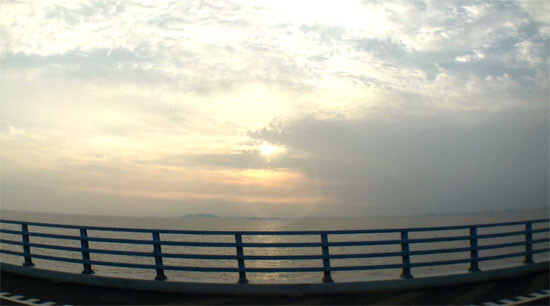

I was told that this bridge was built with the financial support of rich Ningbo businessmen, and that it is the longest bridge in the world. It is merely one of the longest, according to Wikipedia.6
For several years, W.X. has been leading a student group at Ningbo University that meticulously documents Japanese biological warfare throughout the province. Some Zhejiang cities, such as Jinhua, have conducted their own official inquiries, while most have not. The wartime Kuomintang (KMT) was the last national Chinese government to conduct a thorough investigation of Japanese biological war crimes in Zhejiang Province.
In 2010, I went to the western Zhejiang city of Jiangshan by myself to film an elderly Chinese victim of glanders. The local Jiangshan government had banned the Ningbo students from investigating there, and W.X. was afraid to return to the city, as she feared being followed by local agents. I wisely chose to go during the 1 October holiday when many in China take time off to tour the country. When anybody asked, I told them I was there to go mountain climbing.
The Ningbo University students arrange a small conference for us to meet and greet. For many years, they have been diligently canvassing various rural villages and charting the locations of victims, survivors, and witnesses. The students first present their findings and research in a suitably professional-looking PowerPoint slideshow. Coupled with recent Japanese data, a picture emerges of attacks all over Zhejiang Province, with a few localized areas of more extensive onslaughts. Moreover, the contemporary research corroborates the findings of the 1949 Soviet Khabarovsk Trial, which was denounced by US authorities as a show trial and communist propaganda.
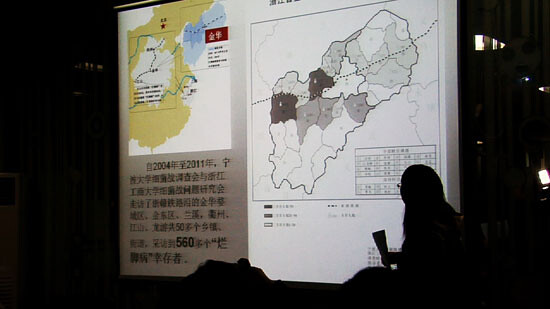

Professor S. surprises the students by claiming that “China has no history.” He highlights the deficits of China’s official history concerning the war and says that researchers need to do more, chart more, travel more, and ask more. The Chinese Civil War and the Cultural Revolution disrupted any easy historiological continuity. Documents and data are spread all over different Chinese cities and other countries, such as the US, Russia, and Japan. Memory lapses, however, are not unique to China.
The Japanese researchers are curious to know why the students joined this investigation group. Surely it must be unpleasant dealing with victims and survivors, and there must be a number of other extracurricular groups such as the basketball trainees practicing near our conference room. One female student says that she joined because she thought it would be fun.
Since I’ve worked with a few generations of this student group, I had always assumed they had joined out of a spirit of nationalistic curiosity. In the past, when I asked them why, the reasons were fairly common, e.g., “I am interested in history.” But why this history in particular? Many of the former students went on to different careers, started families, or generally drifted away from investigating the legacy of Japanese biological warfare. Maybe it was fun for them at the time.
One student poses a question about the disputed islands. Most of the Japanese are tired of hearing it, and it has been a long day, but N.S., a retired independent researcher, just responds that Hu Jintao accused Japan of being a “fascist country.” That was the only response from the Japanese.
The conference goes on for far too long, and we’re all tired and hungry. The students bring us to a small noodle shop, but I want to get back to the hotel to prepare my equipment for tomorrow. W.X. has used my passport to reserve a room for our bus driver, so I can’t make a reservation with it. Apparently foreigners are restricted to one room reservation at a time. So I borrow a student’s ID and book another room. With her student ID, the room is one-third of the price for foreigners.
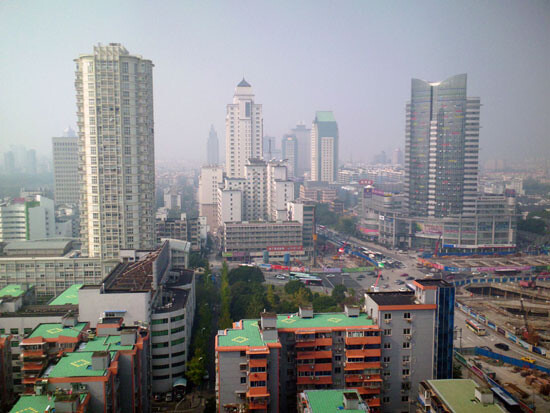

November 16, 2012: The Distinction between Friend and Enemy
At 7 a.m. most of us are ready for our trek into the Ningbo suburbs. Since the bus is too small, the majority of the students stay on campus. I feel bad that they had to wake up so early in the morning only to find out that they couldn’t come.
We arrive on the outskirts of Ningbo and tour various villages and temples. We’re looking specifically for elderly people who were alive during the Japanese invasion. Like eager tourists, the Japanese take pictures of anything that looks old. W.X. isn’t pushing us to go farther into the field. Most of the Japanese are senior enough as it is, so we need to move slowly. We ask any older people about what they know or remember about the attacks, but most are too young or just remain mum. The rain doesn’t help.
I hadn’t been to Ningbo in five or six years, and the changes, like in many Chinese cities, are remarkable. Towering new buildings, stores, and expensive shops surround elegant pedestrian malls, some even adorned with elaborate fountains. Despite being a port city, Žižek might consider this just another “anonymous” Chinese city of millions.7
Unit 731 members first attacked Ningbo with biological weapons in 1940. In preparation they had shipped 70 kg of typhus bacterium, 50 kg of cholera germs, and 5 kg of plague fleas to Hangzhou near Ningbo.8 A strategically important port city and the frontline between Imperial Army and KMT forces, Ningbo had resisted Japanese occupation. Generalissimo Chiang Kai-Shek was also born near the city. Low-flying planes dropped plague-infested fleas, millet, and other contagions onto the civilian population, while other teams poisoned wells and other water reservoirs.
Experiments on live captives in various biological weapons labs throughout China were deemed inadequate. Unit 731 scientists considered cities and villages the perfect places for field tests. The initial Ningbo attack was both a military operation and a science experiment designed to test the best methods of dispersing germ weapons into large populations. According to Major Karasawa Tomio of Unit 731:
My job was to prepare the necessary quantity of germs for the expedition. I also learned that the expedition had taken along five kilograms of plague fleas …
Inasmuch as these tests were made on enemy territory, their precise results were not known.
But a special group was left behind to gather information as to the results of the operation. It was headed by Major Nozaki, who managed to get hold of newspapers which told of the outbreak of an epidemic in the Nimpo [Ningbo] area.9
The plague took root in the center of the city, and when quarantine measures proved insufficient, much of the center was burned to the ground. The whole area has since been rebuilt, and the only reminders (with the exception of the living survivors) are a black obelisk and a small museum in a Communist Party gallery.
While small, the Ningbo plague memorial museum is packed with objects, documents, and even a diorama of what Ningbo’s downtown once looked like. Two elderly survivors greet us and present the museum to the Japanese visitors. F.N., the only female Japanese researcher and producer, begins weeping once she sees them. To me, the mood isn’t exactly somber, as the fluorescent lighting destroys any staging of emotive shots. The other two Japanese researchers just click away on their cameras as the various translators mediate the informal discussions.
Japanese is the lingua franca on this research trip. Only one of the accompanying Japanese students speaks Chinese, and most don’t speak English. Even though she desperately wants to bypass the translator, I want to tell F.N. that it’s useless for her to speak English to the survivors since they can’t understand it. I try to remember all the Japanese I know, but I’m stupid enough to think about pasta when the Japanese mention “ペスト,” pronounced like “pesto,” the Japanese term for plague.
One of the survivors, Hu Xian Zhong, was eight years old when the planes carrying pestilence attacked Ningbo. As he testified in 1997 in a failed lawsuit against the Japanese government:
I am the sole surviving member of a family exterminated by germ warfare carried out by Unit 731, The Imperial Japanese Army, in Ningbo in China …
Despite our mother’s best tries with different medications … my sister left this world … Barely ten days after my sister’s death, my brother, then my father and mother, passed away infected with the plague … Lumps had formed under her armpits … I cried and cried … As a result, I can never forgive the Imperial Japanese Army’s Unit 731.10
He was now a spritely eighty years old, smiling and welcoming the Japanese to Ningbo, eager to show them around the museum. Germ warfare survivors, especially if they have survived for decades, are often hearty folk showing a physiological resistance to infirmity. In Hu’s case, with no open wounds, he seems to have made peace with the past. After the tour he joins us for dinner.
Silently holding his video camera, L.I., a Japanese attorney who helped represent the germ warfare victims in Japanese court, sits right next to Hu. This is interesting to me. I’ve interviewed many biological warfare survivors, but I have never seen them directly interact with any Japanese people. Admittedly, these Japanese have an active interest in documenting Japanese atrocities, so they would constitute the “left wing,” but they are still Japanese. Through the interpreter, Hu explains to the Japanese that survivors like himself still hate Japan for using biological warfare, but this hatred is reserved for the people responsible for the attacks and especially for Unit 731. The Japanese sitting here now are friends who have helped and are helping to chronicle the vestiges of Japanese germ warfare. Hu is appreciative of their efforts, and he knows firsthand that the KMT never finished the investigation, so China needs these Japanese friends to finish writing the story.
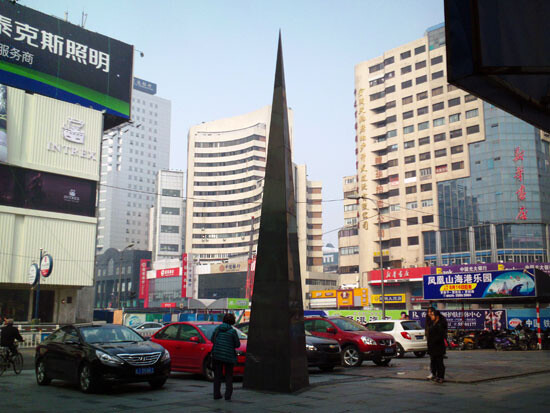

November 17, 2012: “The one who sins is the one who will die.”
W.X. gives us the morning off before we head to Yiwu. Since Professor J. is my roommate, and I am the first American or Taiwanese he has ever spent time with, he takes it upon himself to explain modern China to me. While he admires the efforts of the Chinese Communist Party, he never joined the party because he was too lazy to jump through all the bureaucratic hoops. He is actually a member of a different Chinese political party—I forget which one—but he gleefully tells me that some of the other Chinese professors on this trip are Communist Party members. Parsing his professorial lectures to me, I mark him a revisionist Maoist, in the best sense.
A chain smoker, he constantly offers me Chinese cigarettes. I flatly tell him I don’t want them, and I won’t smoke them because they taste horrible. He claims that Chinese cigarettes are prepared and dried differently than Western cigarettes are and that the Chinese processes are superior because they produce a better taste. I remind him that tobacco was a founding crop of the USA, and that Westerners do know a bit about tobacco and cigarettes. In this situation I am American, and I believe the West is definitely superior, at least when it comes to cigarettes.
Waiting on the bus, W.X. sends the accompanying students to KFC to buy us all lunch. I again have some sympathy for the students for having to carry all the food and drinks, and I remember interning as a student and truly loathing buying lunch for more important people while I went hungry. So I accompany them out of a sense of moral guilt. The KFC is packed with customers, and, mostly out of boredom, I surreptitiously set up a camera to film them. Shouting and pointing, many are rude and hostile to the KFC employees, treating them as if they were incompetent servants. Similarly, counter staff bark orders at workers in the back. The KFC manager sees the camera and demands that I stop filming. I just rest the tip of my tongue between my lips and stare into space like a vegetative moron.
After a few hours on the bus, we reach a small, no-frills hotel in the trading center of Yiwu. I had heard from an American that over 90 percent of the world’s socks were either made or traded here. Zhejiang is not a poor province, and there are a number of Western, Indian, and Muslim businesspeople rushing about the city. BMWs and Mercedes are not uncommon, and a Ferrari or a Porsche can be spotted from time to time.
W.X. hosts a dinner with her Yiwu contacts, among whom are a few successful entrepreneurs. My first impressions are that they care little about biological warfare, and they simply like to be associated with W.X. and this important issue. Losing interest in the get-together, many of us watch the news.
Professor W. speaks colorfully about Israel’s bombing of Gaza and the issues surrounding the Israeli/Palestinian conflict. He seems to know his stuff, and his sympathies lean toward the Palestinians. Other professors question Israel’s motives for the bombing campaign and Israel’s relationship with the United States. Chinese CCTV news is not bad at airing other countries’ dirty laundry.
Shinzo Abe then appears on a newscast, and all the Japanese move closer to the TV. They seem to be alarmed, and this is the first I had heard of Abe running again for Prime Minister of Japan. Put simply, Shinzo Abe is a right-wing Japanese nationalist who notably denies that comfort women were ever coerced by the Japanese military. He is also the grandson of Kishi Nobusuke, an accused Japanese war criminal and former post-war Prime Minister, who allegedly enslaved thousands of Chinese laborers and worked them to their death in Manchukuo. Nobusuke was accused but never indicted by the flawed Tokyo Trial. Abe’s revisionist-nationalist sentiments merely add to his “inherited guilt.”
A Chinese journalist wants to interview me, as she’s curious why I would have an interest in Japanese biological warfare. I tell her that I am interested in guilt. What is guilt? How do you film it? How do you quantify it? Contra the Old Testament, I believe that guilt is inheritable, not in the sense of original sin, but embodied in entities like money, influence, and other forms of capital.11 For instance, one can inherit guilt by inheriting “ill-gotten gains.” Of course, the argument can be made that “all money is blood money,” as Noam Chomsky has declared, but it is obvious to me that some forms of capital, even cultural capital, are stained with symbolic or documentable blood.
In The Question of German Guilt, written shortly after the Nazi capitulation, Karl Jaspers outlines four types of guilt. “Criminal guilt” is only applicable to those who personally violated international or natural law and have been convicted of their crime(s). “Political guilt” applies to every citizen of a guilty nation insofar as citizenship connotes participation or acceptance of a nation’s crimes, regardless of the citizen’s personal perspective on them. “Moral guilt” is purely personal in nature—the bite of conscience (Nietzsche’s bite into a stone or Rawlsian “authority guilt”). And the most complicated form is “metaphysical guilt”: for Jaspers, guilt in the eyes of God, in the sense that “If I fail to do whatever I can to prevent them [crimes], I too am guilty.”12 In the age of information, many of us are metaphysically and politically guilty.
Even if Japan is an authentic “shame culture” with less of a focus on moral guilt, guilt is still a universal human emotion missing only in psychopaths.13 I speculate that guilt, in some form or another, is a motivating factor for the Japanese on this research tour. It is what I came to film.
The Democratic Party of Japan (DPJ) holds a more “progressive” stance on Sino-Japanese history issues than the currently ruling Liberal Democratic Party (DPJ) does.
Worse Than War (2010), directed by Mike Dewitt, based on the book Worse Than War (2009) by Daniel Goldhagen. See →.
Officially known as the “Military Tribunal of the Primorye Military Area,” the 1949 Soviet “Khabarovsk Trial” prosecuted 12 mid- to high-level Japanese biological warfare scientists or workers. Their testimony implicated numerous Japanese units throughout Asia and even the Emperor himself.
See →.
IMTFE 1946, 4546–4547, quoted in Suzy Wang, “War Crimes Trails and Post-War Politics,” in Japan’s Wartime Medical Atrocities,ed. Jing-Bao Nie et. al. (New York: Routledge, 2010), 33–34.
Hangzhou Bay Bridge. See →.
Sheldon Harris, Factories of Death: Japanese Biological Warfare, 1932–1945, and the American Cover-Up (New York: Routledge, 2002), 100.
Materials on the Trial of Former Servicemen of the Japanese Army Charged with Manufacturing and Employing Bacteriological Weapons (Moscow: Foreign Languages Publishing House, 1950), 269–270.
Daniel Barenblatt, A Plague upon Humanity (New York: HarperCollins Publishers, 2004), 139–140.
“The one who sins is the one who will die. The child will not share the guilt of the parent, nor will the parent share the guilt of the child. The righteousness of the righteous will be credited to them, and the wickedness of the wicked will be charged against them.” Ezekiel 18:20, The Bible, New International Version.
Karl Jaspers, The Question of German Guilt, trans. E. B. Ashton (New York: Fordham University Press, 2000), 26.
Ruth Benedict, The Chrysanthemum and the Sword (Boston: Houghton Mifflin Company, 1946), 222–224.